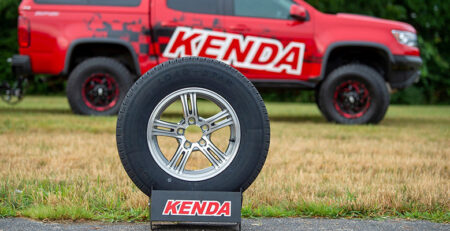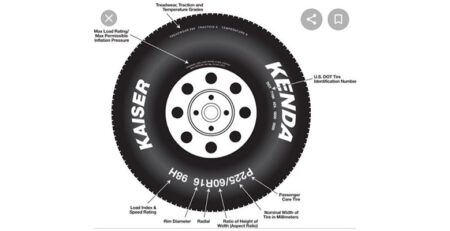Tires are the pillars of any vehicle and for the prevention of mishaps, it is essential to keep a check on them. Incorrect tire fittings and failure to keep a track of efficiency, may lead to a longer timeout and a decrease in profits earned through your business.
INFLATION, A TIRE’S BEST FRIEND!
Rubber and a few other compounds come together under heat, to form a perfect tire. But this makes heat and friction a tire’s foe. Speed and friction cause a tire to heat up to an immense degree, which may cause critical damage to the tire unless it has been inflated properly. For excellent functionality, inflating a tire to the perfect PSI (pounds per square inch) is a must. Although TPMS (Tire Pressure Monitoring System is useful, you should not rely solely on the information it provides as it is not the most accurate damage prevention formula. The system fails to display accurate data as the pressure data may not always be cent percent accurate. Moreover, an alarm does not go off until the pressure falls to 10 PSI.
PSI ENEMIES
Lower PSI levels can be caused by both time and temperature. This holds true only if the tire is obviously, not punctured or badly damaged. Just as wear and tear of parts is caused by machines which keep running, a tire is no different. Constant use takes a toll on them too. The decrease in pressure of a commercial tire is roughly about 2 PSI per month. Operators failing to keep a check on tire pressure could result in a whopping 15 percent drop in PSI levels over a period of three months.
Similar to time, temperature has a negative effect on tires too. For every 10-degree Fahrenheit drop in temperature, a tire loses an entire PSI. Colder weather would therefore lead to drastically low PSIs and underinflated tires if you don’t keep a check.
INSPECTING YOUR TIRES
The inspection of a tire is something very critical to its functionality. To ensure long life and excellent run, it is essential that you keep monitoring it ever so often. Even better, if you can adjust your routine to incorporate daily inspections.
The first thing you should check and that which comes to mind is checking PSI levels. A smart thing to do is check this, when the tire is cold and not warm due to friction and running. A warm tire will lead to an inaccurate PSI reading.
The second most important thing to check is to ensure sufficient tread depth. This is important as enough contact between a tire and road is necessary for traction. If you’re wondering why enough traction is necessary, then you need to know that this in fact is critical for a vehicle’s safety. Safety is ensured as proper tread fulfills the traction required for steering, braking and even cornering.
A treadway indicator is installed into every vehicle that is used on a highway. A treadwear indicator is essentially a raised rubber ridge which is placed laterally along a tire’s tread, but this should be below the top of a tire’s tread ribs. A treadwear almost in contact with the tread surface indicates a damaged and worn-down tire which then needs to be replaced.
After inspection, if you deduce that your tire indeed has a lack of the required tread, then you need to take action. A replacement is a must, to avoid any mishap or tire bursts. It is also extremely important to check if the tire has any signs of cracks or tears, punctures, nails or any other sharp objects. All of these allow you to prevent a drastic drop in PSI levels and therefore, a blowout.
LOAD CARRYING CAPACITY
Another friend of underinflated tires is a reduction in load carrying capacity. Severe cases could lead to overload on a tire even though a vehicle may be actually empty or unloaded. Vehicles which are used for loading and conveyance of heavy objects should especially be checked for underinflated tires. This is important as huge load leads to extreme load on the tires which may then lead to an accident due to imbalance or a blowout.
ADVANTAGES OF PERFECT TIRE INFLATION
- Tread life is maximized, which covers up all the money you put into purchasing your tires
- Proper tire inflation leads to perfect steering, cornering and braking with or without load
- Increased load capacity to allow you to load your vehicle to its maximum, while enjoying a safe journey
- Makes driving safe and risk-free
- Allows you to get the most out of your evaluated fuel budget
REPLACEMENT, ALIGNMENT AND ROTATION
A smart thing to do is to keep rotating your tires which ensures a distributed wear and tear on the tires. Tread wear is distributed along the rim which makes your tires last longer and prevents damage from occurring too soon.
Another wise thing to do, is to keep rotating both the front tires to the rear side as most commercial vehicles use the front wheel drive. Tire manufacturers suggest rotating tires after a run of about 8000 km to 13000 km. The newer and more modern tires range in lifespan with an average that is about 8000 km to 9500 km. With regards to this information, one can deduce that it is possible to rotate your tires a whopping 8 times before their lifespan ends.
If for any reason, you decide to change two tires instead of all four, it is best that you switch the rear ones first. This will lead to better grip and will prevent oversteering from happening.
- Correct tire inflation increases treadwear by 5% to 25%
- It is a smart move to replace all 4 tires at once to make maintenance easier and to ensure proper vehicle run
- Usually, the tires on the front axle are the first ones to wear out or get damaged
- An older tire will lead to a decrease in mileage in its total lifespan
Proper alignment angle is another thing that affects a vehicle’s performance. Tires aligned in a toe out or toe in angle are the first ones to show signs of excess wear and make steering difficult. The proper alignment frequency depends on each vehicle, road conditions as wells as suspension. It is possible for vehicles to work perfectly for almost 2 years before they require a re-alignment of their tires.






Leave a Reply